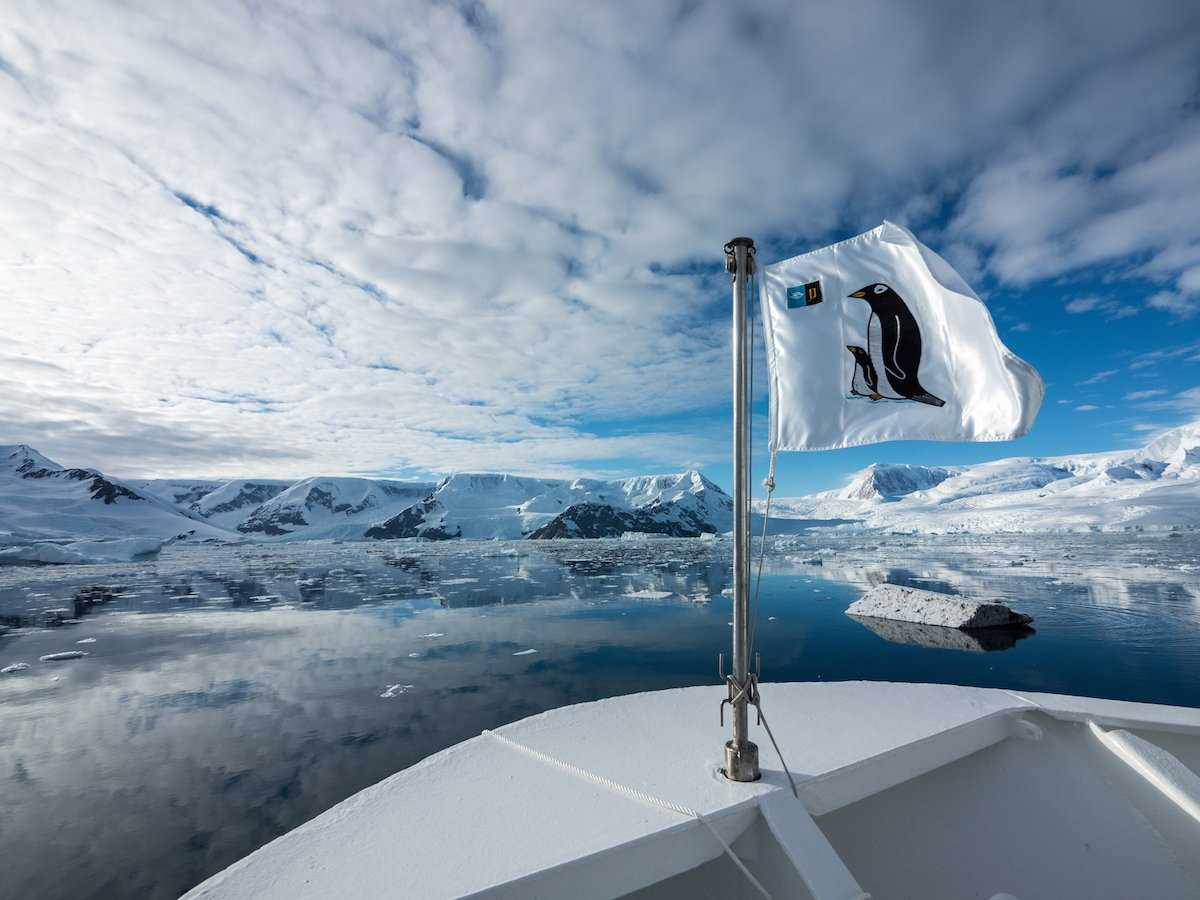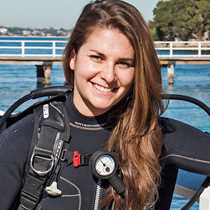Antarctica has a way of taking you in like nowhere else on this planet can. After an incredible light show last night, we found ourselves in the temperate morning waters of the Errera Channel. Surrounded by stunning glacial faces and impressive mountain peaks reflecting off the surface, light clouds parted for blue skies as we made our way toward our first landing of the day: the famous Neko Harbor. Ashore, we were met with the sight of gentoo penguins up along the high glacial ridges. The gentoos here are in differing nesting stages. Younger chicks still sleep in nests while parents take turns to waddle down the deep penguin highways to forage.
Areas on the ground cleared of snow revealed hundreds, possibly thousands, of the unique feathers of the penguins that have been going through their molting period. As we made our way back toward National Geographic Orion for lunch, curious minke whales were spotted amongst the icebergs and growlers.
In the afternoon we found ourselves in the protected waters near Cuverville Island, a perfect location to explore by kayak and Zodiac. Setting out away from the ship by smaller watercraft offers a much more intimate encountering of unique ecosystem. Here we were treated to epic sightings of humpback whales taking advantage of the nutrient-rich waters. As if the day wasn’t already incredible enough, we rounded out our afternoon with none other than the polar plunge! The bravest among us came down one by one to jump into some of the planet’s coldest water, while the more prudent of our group observed from the deck above.
Once warmed up again, we began cruising our way north along the west coast of the Antarctic Peninsula as we presented our evening recap. After dinner, guests enjoyed learning about smartphone photography by naturalist and photo instructor Emily Mount. Meanwhile, our undersea team took advantage of the conditions in our location to set out for a dive. Expedition diving is often a wonderful exploratory experience, but this dive site was well known and sought after – the wreck of Governoron in the Foyn Harbor of Enterprise Island. What was once a very successful Norwegian whaling vessel at the height of the whaling enterprise now boasts an astonishing amount of marine overgrowth since sinking more than a century ago.
The hull of the ship provides a great vertical substrate for a plethora of invertebrates to thrive, from arborescent sponges to large tunicates, anemones, and sea stars. Although the wreck is bursting at the seams with colorful organisms, the real draw for diving at this site is the chance to see the bones of 100-year-old blue whales. Swimming over an elephant graveyard of the largest animal to ever exist on this planet, now the most critically endangered whale species, is a humbling reminder of not only how far we have come from our actions in the past, but to consider how our choices in the present will affect our future.
Continuing to cruise north towards the tip of the Antarctic Peninsula, we said good night under fiery skies and a beautiful sunset. Exploring the White Continent today is the kind that leaves an indelible mark upon those who are fortunate enough to experience it. How privileged we are to count ourselves among that group.







